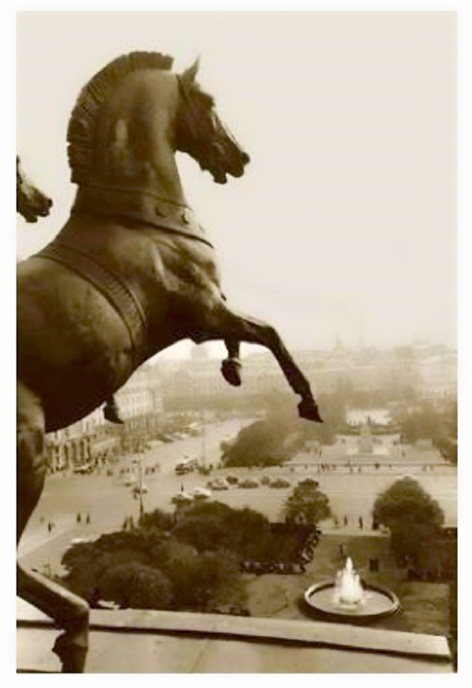The Visual Revolution: Russian Avant-Garde Photography
It’s hard to overstate the impact Alexander Rodchenko has had on visual culture.

Source: Courtesy Richard Saltoun Gallery.
Alexander Rodchenko 1891-1956 Stadium Dinamo (Dynamo Stadium), 1936
Not only was he a key member of the Constructivist movement of designers and artists, it’s said that it was he that inspired the term, when art writer and painter Kazimir Malevich described his work. As part of that group of early 20th century practitioners, Rodchekno’s influence can be seen from the Bauhaus movement to postmodern design.

Source: Courtesy Richard Saltoun Gallery.
Alexander Rodchenko 1891-1956 Pryzhok s shestom (High Jumper), 1937
Starting out as a graphic designer and painter, Rodchenko then began working in photomontage and photography.

Source: sal
Vkhutemas Workshop 1920 – 1930 148. Vkhutemas, 1920s
A new show at London’s Richard Saltoun gallery will celebrate his photographic works, alongside those of Moscow art school, the VKhUTEMAS Workshop., where he was a professor.
Rodchenko’s photography is characterised – like his graphic design and painting – by strange angles, often shooting one subject from numerous points of view.

Source: Courtesy Richard Saltoun Gallery.
Georgi Lipskerov 1896 – 1977Paransha. Burka, Central Asia
The show, entitled The Visual Revolution: Russian Avant-Garde Photography, will exhibit work drawn from a single collection built earlier this century, and more than 100 photographers’ work will be shown, including images by Simon Fridland, Naum S Granovski, Yevgeni Khaldei, Akady Shishkin and Georgi Zelma, as well as Rodchenko.

Source: Courtesy Richard Saltoun Gallery.
Georgi Zelma 1906 – 1984Petrusov and Shaikhet
The show provides not only an insight into early 20th century visual culture, but also the social and political climate.

Source: Courtesy Richard Saltoun Gallery.
Georgi Zelma 1905 – 1984View from the top of the ‘Bolshoi Theatre’, Moscow, 1950s
‘Though used in Soviet Russia since the turn of the twentieth century, it was not until the Social Revolution of 1917 that the photographic medium was privileged over painting’, explains the gallery.
‘Its documentary and artistic capabilities were quickly exploited for State propagandistic purposes: portraying a ‘truthful’ depiction of everyday life, culture, and architecture of the New Soviet State.’

Source: Courtesy Richard Saltoun Gallery.
Alexander Rodchenko 1891-1956Zhenshchina s kolyaskoi (Woman with baby carriage), 1928
Rodchenko’s explorations into photography as a medium began in 1924, and his images often captured street scenes in an innovative way inspired by artists such as Moholy-Nagy – shown in the strange new blend of traditional techniques with unusual perspectives.
The gallery says, ‘Photography was for him a tool to depict the discrepancy between ‘high’ and ‘low’ culture in Soviet society, balancing formal concerns with a focus on documenting contemporary social and political life.
‘From intimate portraits to street scenes, from dynamic architectural analysis to photomontage, his revolutionary practice re-established the role of photography and of the photographer himself.’
The Visual Revolution: Russian Avant-Garde Photography, Alexander Rodchenko & the VKhUTEMAS Workshop runs from 9 July – 29 August at Richard Saltoun, 111 Great Titchfield Street London W1W 6RY

Source: Courtesy Richard Saltoun Gallery.
Max Alpert 1899 – 1980Untitled (Dnepr Dam)
-
Post a comment




